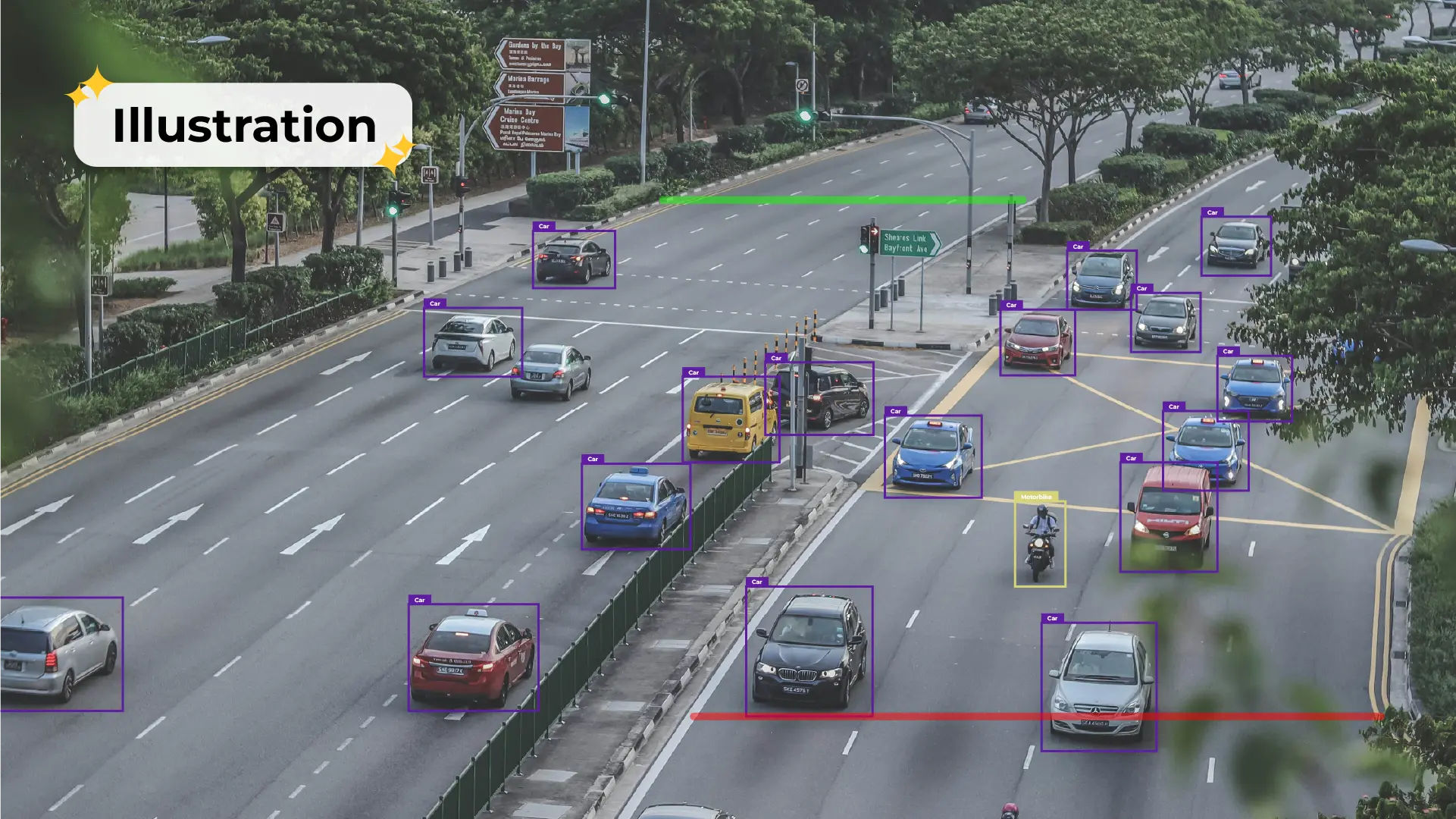How AI Enhances Video Analytics Processes
Video Analytics is an increasingly captivating technology and for good reason. With its ability to analyze video and extract digital information, it plays a crucial role in camera monitoring. Moreover, the integration of Artificial Intelligence (AI) significantly enhances video analytics performance in processing predefined specific tasks.
In this article, you will learn about the explanation, working mechanism, and role of AI in video analytics, based on our case study of monitoring incoming and outgoing vehicles.
What Is Video Analytics?
Video Analytics is a technology designed to simplify the analysis of video footage captured by surveillance cameras/CCTV and extract it into actionable information. Through this capability, video captured by surveillance cameras can be processed to support business decisions.
How Video Analytics Works
Video Analytics analyzes raw data captured by surveillance cameras and processes it into meaningful information. The workflow consists of three main stages:

Detection
Detection is an advanced form of classification. In classification, an object is introduced to the video analytics system, teaching it to differentiate between various objects (e.g., distinguishing humans, animals, and vehicles). Detection goes further by not only identifying and differentiating objects but also pinpointing their location within the image using bounding boxes.
AI plays a critical role in this detection stage. The data required to classify and detect objects is substantial. With vast amounts of data, AI technology can make predictions and learn from errors to improve object classification and detection accuracy.
Tracking
During the tracking process, video analytics performs object detection across each frame over time. It identifies the same object across multiple frames to understand its actions, movement direction, and other behaviors.
Reasoning
Every Video Analytics application has unique objectives, such as counting people, detecting vehicle movement directions, etc. Thus, the reasoning process varies based on the defined goals.
At this stage, the information derived from video analytics becomes highly valuable. Enhanced by AI, this data can be analyzed to generate actionable recommendations and new business insights.
Case Study: Incoming & Outgoing Vehicle Monitoring
As an example, let’s examine a case where KLIK Group was entrusted to develop an application for monitoring incoming and outgoing vehicles.
- In the Detection phase, we used machine learning and deep learning models to classify and categorize humans, motorcycles, and cars passing through the area.
- In the Tracking phase, we conducted frame-by-frame realtime analysis to detect object movement as the video played.
- In the Reasoning phase, we identified the same vehicle and determined its movement direction (incoming/outgoing). This was achieved using marker lines, when a vehicle crossed these lines, video analytics counted it as an incoming or outgoing vehicle based on its movement direction.
All these stages were executed in real-time and accessible via a dashboard application displaying:
- Data from multiple CCTV camera
- Vehicle categories
- Entry and exit times
- Total incoming and outgoing vehicles
- Daily/weekly data analysis charts
Conclusion
To achieve optimal results from video analytics, you need to go through three key stages, which are Detection & Classification, where you detect object positions and group various objects into categories; Tracking, where you track the movement of the same object frame by frame in real time; and finally, Reasoning, where you apply logical analysis to the video data to generate actionable insights.
With the vast amount of data used, AI can predict and learn from errors, making it highly useful in the initial stages of video analytics for categorizing and detecting objects captured by CCTV cameras.
Moreover, AI can also be leveraged to manage and analyze the data produced by video analytics, providing actionable recommendations and creating new value for your business.
Maximize Your Surveillance Now!
With 11 years of experience delivering AI powered Digital Transformation, KLIK Group is ready to create a custom AI powered Video Analytics application tailored to your business needs!
Contact Us

